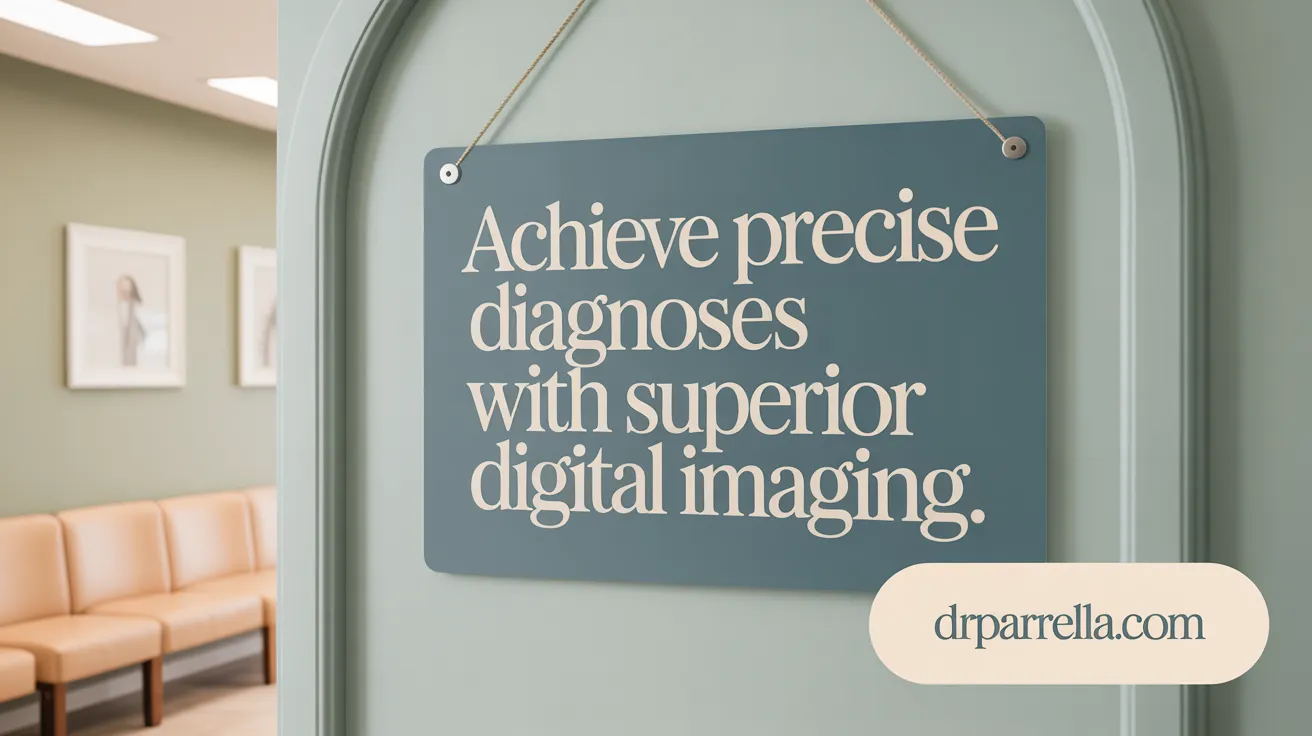Introduction to Digital X-Rays in Modern Dentistry
Overview of Digital X-Ray Technology
Digital X-rays use advanced electronic sensors instead of traditional film to capture detailed images of teeth, gums, and jaw structures. These images are displayed instantly on a computer screen, allowing dentists to analyze them in real time, adjust brightness and contrast, and zoom in on areas of concern.
Comparison with Traditional X-Ray Methods
Compared to conventional X-rays, digital technology produces higher resolution images while reducing radiation exposure by up to 80-90%. The reduced need for chemical processing not only speeds up the imaging process but also benefits the environment by eliminating hazardous waste.
Importance in Dental Diagnostics
Digital X-rays vastly improve diagnostic accuracy by revealing issues such as cavities, bone loss, infections, and abnormalities that may be missed during routine exams. Immediate image availability allows for quicker diagnosis and treatment planning, enhancing patient care and comfort during dental visits. This technology is especially valuable for vulnerable patients like children and pregnant women, who benefit from lower radiation doses.
Enhanced Diagnostic Accuracy through Superior Imaging

How do digital X-rays improve diagnostic accuracy?
Digital X-rays significantly enhance diagnostic accuracy by producing high-resolution images that reveal fine details of dental structures. These images are available instantly on a computer screen, allowing dental professionals to perform immediate and thorough evaluations.
A major advantage lies in the ability to manipulate the images digitally. Dentists can enlarge specific areas, adjust contrast and brightness, and zoom in, facilitating the identification of subtle abnormalities such as early cavities, infections, bone loss, and even tumors. This precise visualization is not possible with traditional film X-rays, which have lower resolution and lack such flexibility.
Furthermore, digital sensors provide precise measurements that assist in treatment planning. Accurate detection and evaluation of dental issues enable dentists to make informed decisions for restorative procedures, implant placements, orthodontics, and root canal treatments. Early diagnosis through enhanced imaging reduces the need for invasive treatments, improving outcomes and patient comfort.
Overall, the superior imaging capabilities of digital X-rays support comprehensive dental care by combining sharper digital X-ray images with versatile digital tools, resulting in better diagnostic confidence and effective treatment strategies.
Significant Reduction in Radiation Exposure Enhances Patient Safety

What are the radiation safety advantages of digital X-rays?
Digital X-rays offer a remarkable safety benefit by reducing radiation exposure by up to 80-90% compared to traditional film X-rays. This substantial dose reduction is thanks to highly sensitive digital X-ray sensors that require much less radiation to produce clear, high-resolution digital X-ray images. Because of this, digital X-rays are especially safer for vulnerable groups such as children, pregnant women, and patients who need frequent imaging for ongoing care.
The design of digital X-ray equipment includes advanced safety features like precise control over the X-ray beam and highly sensitive detectors. These features ensure that radiation is tightly focused only where needed, minimizing scatter and unnecessary exposure. This approach supports adherence to the ALARA (As Low As Reasonably Achievable) principle, a guiding standard in radiology that aims to keep radiation doses as low as possible while still obtaining quality diagnostic images.
By reducing radiation risks without compromising image quality, digital X-rays enhance patient safety significantly. This makes them a preferred choice in modern dental and medical imaging settings, offering confidence to patients and care providers alike.
Improving Patient Experience and Workflow Efficiency

How do digital X-rays improve patient comfort and clinical efficiency?
Digital X-rays offer significant improvements in patient comfort with digital X-rays and clinic workflow. The use of smaller, thinner digital X-ray sensors compared to traditional film packets makes the imaging process less intrusive and more comfortable for patients. Images are captured almost instantly and displayed immediately on a computer screen, which reduces the time patients spend during their visit, providing immediate digital X-ray image review.
This instant image availability allows dentists to diagnose and discuss treatment options right away, speeding up the overall appointment process. The enhanced image quality provided by digital X-rays reduces the likelihood of retakes, minimizing additional radiation exposure and shortening appointment times.
Furthermore, digital storage and easy sharing of images facilitate streamlined communication with other healthcare professionals, improving collaborative care and treatment planning.
From an environmental perspective, digital X-rays eliminate the need for chemical processing, reducing hazardous waste and supporting eco-friendly dental practice operations.
Overall, digital X-rays enhance patient comfort, increase diagnostic speed, improve image reliability, and promote efficient, sustainable dental care.
Advanced Technologies and Multi-disciplinary Applications

What advanced technologies are integrated with digital X-ray systems?
Digital X-ray technology today goes beyond traditional two-dimensional imaging, integrating advanced tools that significantly enhance diagnostic capability. One such innovation is Cone Beam Computed Tomography (CBCT), a 3D imaging technology that delivers detailed three-dimensional views of teeth, jawbone, nerves, and soft tissues in a single scan. This precise visualization is especially valuable in complex dental procedures such as implant placement, orthodontic treatment planning, and root canal therapy, allowing for meticulous assessment and improved treatment outcomes.
Artificial intelligence (AI) is another cutting-edge addition to digital X-ray systems. AI algorithms in digital radiography assist in image analysis by detecting subtle abnormalities and early signs of dental issues that might be missed by the human eye. This technology supports dental and medical professionals in delivering faster, more accurate diagnoses, enhancing patient care.
Digital X-rays are also extensively utilized beyond dental care. In orthopedics, they facilitate the evaluation and management of fractures and bone disorders with high-resolution images and precise measurements (Accuracy of digital radiography measurements). Chest imaging benefits from digital X-ray technology by promptly detecting conditions such as pneumonia, lung infections, and cancer, enabling quick clinical decisions (Digital X-rays technology).
Together, these advancements illustrate how digital X-ray technology are evolving into a versatile, multi-disciplinary tool that improves clinical accuracy, patient safety, and treatment effectiveness across various healthcare fields (Cone Beam Computed Tomography (CBCT)).
Commitment to Patient Safety and Quality Care in Family Dentistry
How does the use of digital X-rays align with patient-centered dental care?
The adoption of digital X-rays in family dentistry showcases a strong commitment to patient safety and high-quality care. Digital X-rays reduce radiation exposure by up to 80-90% compared to traditional methods, which is especially important for children, pregnant women, and patients requiring frequent imaging. This reduction significantly lowers health risks while maintaining excellent image clarity.
Digital imaging enables dentists to provide real-time visuals to patients during their visits, enhancing communication and building trust. Patients can better understand their diagnosis and treatment options when they see detailed images immediately. Moreover, digital files are securely stored, improving record-keeping and facilitating seamless sharing among healthcare providers to ensure continuity of care.
Environmental stewardship is a further benefit, as digital X-rays eliminate the need for chemical development of films, reducing hazardous waste and supporting eco-friendly dental practices.
Comprehensive training for dental teams on digital radiography techniques and stringent safety protocols minimize unnecessary radiation and retake rates. This approach maximizes diagnostic accuracy and enhances patient comfort and confidence throughout their dental experience.
The Future of Safe, Accurate Dental Diagnostics
How Digital X-Rays Improve Accuracy and Safety
Digital X-rays have revolutionized dental diagnostics by providing clearer, high-resolution images that enhance the detection of cavities, infections, and bone loss. Their advanced sensors deliver images almost instantly, allowing dentists to diagnose and plan treatments quickly and more precisely. Compared to traditional film X-rays, digital systems reduce radiation exposure by up to 80%-90%, making procedures safer for patients—including children and pregnant women. The ability to manipulate images with zoom and contrast adjustments further boosts diagnostic accuracy.
Ongoing Technological Advancements
Dental imaging technology continues to evolve with innovations such as 3D Cone Beam Computed Tomography (CBCT) that offer three-dimensional views of dental structures. These advances improve treatment planning for complex cases like implants and orthodontics. Enhanced software and artificial intelligence aid in early and more accurate detection of dental issues, improving patient outcomes. Digital files are easily stored, accessed, and shared, increasing collaboration between dental professionals and supporting continuous care.
Embracing Digital Tools for Better Care
Patients are encouraged to embrace digital X-ray technology for its safety, comfort, and diagnostic benefits. Modern digital systems minimize exposure to radiation while delivering faster, clearer results. This enables more efficient dental visits and better-informed treatment decisions. Choosing a dental practice that uses up-to-date digital imaging demonstrates a commitment to patient-centered care, prioritizing both safety and high-quality diagnosis for lifelong oral health.
